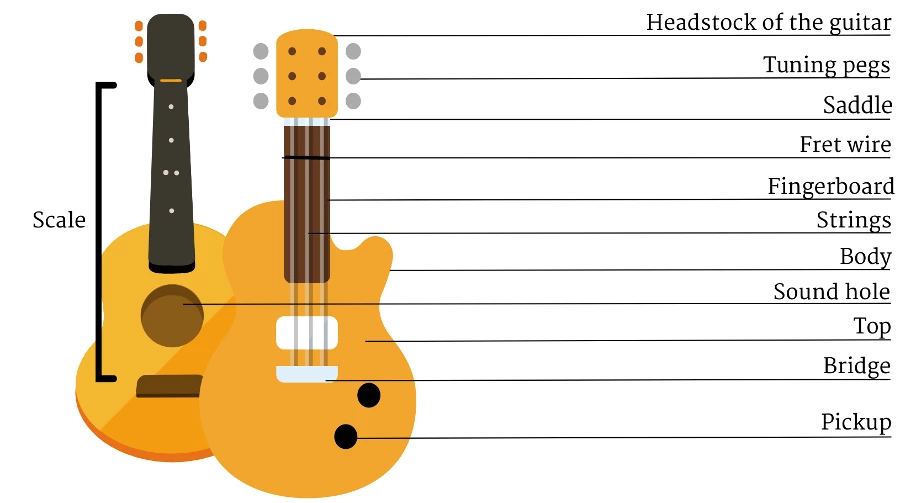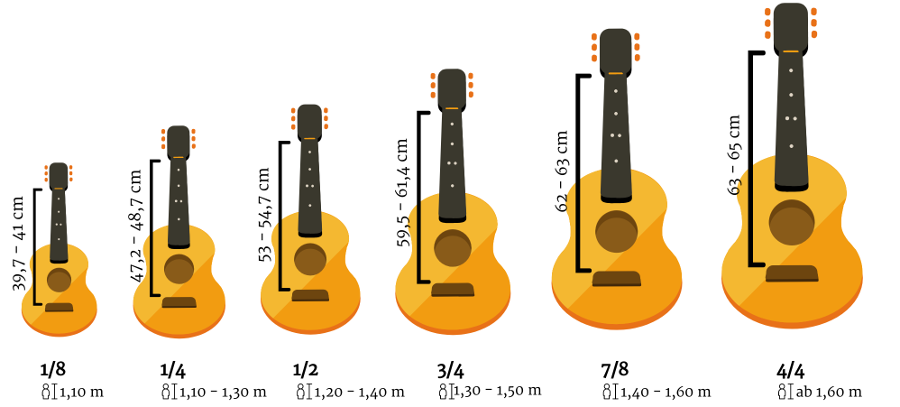Bending is an essential technique for rock and blues. Learn how to pull the strings on the electric guitar. Plus: 6 tips for improving your technique.

Guitar teacher
The construction of a guitar is rather simple. The following graphic shows you the structure in detail:

Let’s start with the guitar headstock. The main piece of the guitar head is the headstock. The tuning pegs are fixed to it, along with the tuning mechanism and the saddle.
The tuning mechanism ensures that your guitar sounds as it should.
The pegs are the (mostly white) plates on the side of the guitar head. Each one is connected to one string on each guitar.
You move the tuning mechanism by turning the pegs to adjust or tune the pitch of the individual strings.
When you turn the pegs upwards, you tension the strings and raise the pitch.
When you turn the pegs downwards, you loosen the strings and lower the pitch.
The saddle separates the guitar headstock from the guitar neck. Its small notches (grooves) keep the guitar strings in the appropriate position.
The next part is the neck. The distance from the saddle to the bridge is called the scale. The scale tells you which size of guitar you need.
In the following graphic you can find the different scales and the corresponding guitar sizes.
Your personal height will determine which size of guitar you need:

The guitar neck starts at the saddle. The neck consists of the fretboard and the frets that cross it.
If the guitar is strung with steel strings, a tension rod in the neck reinforces it.
The fretboard is divided into frets. It is the area between two fret wires. A fret represents a half step.
If you move your hand up one fret on the neck, the pitch is a semitone (half step) higher. If you move one fret down, the resulting pitch is a semitone lower.
The frets are not all evenly distributed. The narrower a fret is, the higher the pitch of the notes within it.
Guitars are strung with either nylon or steel strings. Changing the string type from nylon to steel is not recommended because it might break the guitar. Electric guitars are played exclusively with steel strings.
Guitar strings vary in thickness depending on their pitch.
If you press the guitar strings on the fretboard, you shorten them and different pitches are produced.
The strings of classical guitars are tied to the tailpiece of the bridge. On electric guitars, on the other hand, they are threaded into the tailpiece and held by means of ball ends (metal knobs at the end of strings). On western guitars they are clamped with bridge pins (plastic sticks). For guitars with tremolo system, the strings are screwed down.
The other end of the string is threaded through a hole in the tuning mechanism on the guitar head and wound tightly there.
Guitar strings make the soundboard of acoustic guitars vibrate and contribute to the sound.
The string action is the distance between the string and the fret wire.
The smaller the distance the easier it is to play, especially for beginners. Unfortunately, the sound might suffer and string buzz can be introduced.
The resonance body of guitars includes top, back, bridge and sound hole, and the pickups for electric guitars
The front of the guitar is called the top (the back is called the back)
On acoustic guitars, both the hollow wooden body and the top reinforce the effect of the sound hole. The soundboard and body reflect the sound produced by the strings. This is how a loud sound is created.
The bridge is the elongated rod on the top of the guitar on which the tailpiece holds the strings in position.
The sound hole of the acoustic guitar is essential for the sound of the guitar. It resonates when the guitar string is struck and sends the resulting sounds outwards. The resonance on the top increases the volume of the guitar. Sound holes are available in various designs, they do not necessarily have to be round (treble clefs).
The body of electric guitars, on the other hand, is solid.
They use three magnetic pickups instead of a sound hole to produce the sound. These pickups are magnetic and generate current from the vibration of the strings.
The sound is then passed from the pickup to the amplifier, which amplifies it.
Different pickups produce different sounds. Single coil pickups produce a transparent sound. Humbucker pickups produce a voluminous sound and can eleminate electrical interference more effectively.
Bending is an essential technique for rock and blues. Learn how to pull the strings on the electric guitar. Plus: 6 tips for improving your technique.
Learn to play power chords! We show you the structure, chords and useful tips. Plus: Get the main chords in a chart download.
To learn an instrument you have to practice a lot. But no worries. 10 tips show you how to learn so effectively that you make progress super fast.